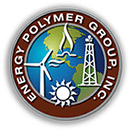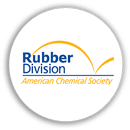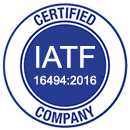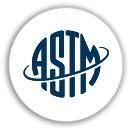ASTM D6814: Standard Test Method for Determining the Devulcanization of Crumb Rubber Based on Crosslink Density
ASTM D6814 is a standardized test method developed by ASTM International to determine the degree of devulcanization of crumb rubber by measuring crosslink density. This method is crucial for assessing how well rubber recycling processes break down sulfur crosslinks in vulcanized rubber, making the material reusable in new rubber products.
Crumb rubber, derived from used tires and other rubber products, is widely used in sustainable applications such as playground surfaces, asphalt modification, and new rubber compounds. Understanding its level of devulcanization helps manufacturers determine its suitability for reuse in high-performance applications.
Purpose and Importance of ASTM D6814
The primary objectives of ASTM D6814 include:
- Measuring Devulcanization Efficiency: Quantifies how effectively sulfur crosslinks are broken down in recycled rubber.
- Ensuring Rubber Quality for Reuse: Determines the suitability of devulcanized rubber for manufacturing new products.
- Standardizing the Recycling Process: Provides a consistent method for evaluating different devulcanization techniques.
- Supporting Sustainable Manufacturing: Helps industries incorporate recycled rubber into new products while maintaining quality and performance.
Key Test Procedures in ASTM D6814
The ASTM D6814 test method evaluates devulcanization by measuring the crosslink density in a rubber sample. The test involves several key steps:
1. Sample Preparation
- A rubber sample is taken from crumb rubber or devulcanized rubber material.
- The sample is prepared according to specified dimensions and dried to remove moisture.
2. Swelling in Solvent
- The sample is immersed in a good solvent for rubber, such as toluene, to allow swelling.
- The solvent penetrates the rubber network, causing expansion based on the level of remaining crosslinking.
- The degree of swelling provides insight into how much the rubber has been devulcanized.
3. Measurement of Swelling Ratio
- The swelling ratio is calculated by measuring the sample’s volume before and after solvent exposure.
- A higher swelling ratio indicates a greater degree of devulcanization.
4. Crosslink Density Calculation
- The crosslink density is determined using Flory-Rehner equations, which relate swelling behavior to the number of crosslinks in the rubber network.
- The final crosslink density value reflects the extent of rubber devulcanization.
Interpreting the Test Results
The results from ASTM D6814 help classify crumb rubber based on its devulcanization level:
- Fully Devulcanized Rubber: Very low crosslink density, meaning it can be reprocessed like virgin rubber.
- Partially Devulcanized Rubber: Moderate crosslink density, allowing blending with new rubber for enhanced properties.
- Minimal Devulcanization: High crosslink density, meaning the rubber is still highly vulcanized and less flexible for reuse.
Factors Affecting Devulcanization and Test Results
Several factors influence the effectiveness of devulcanization and ASTM D6814 test results:
- Chemical Treatment: Different chemicals used in the devulcanization process affect how well crosslinks are broken.
- Processing Temperature: Higher temperatures can accelerate devulcanization but may also degrade rubber properties.
- Swelling Time: Longer solvent immersion can provide a more accurate crosslink density measurement.
- Rubber Composition: The presence of fillers, oils, and different polymer types can impact swelling behavior.
Applications of ASTM D6814
ASTM D6814 is used across various industries that incorporate recycled rubber into their products. Common applications include:
- Tire Recycling: Evaluates the quality of devulcanized rubber for use in new tire compounds.
- Rubberized Asphalt: Determines whether crumb rubber can be used in road paving materials.
- Athletic and Playground Surfaces: Ensures safety and durability in rubber-based flooring products.
- Industrial Rubber Products: Assesses the reusability of devulcanized rubber in belts, seals, and gaskets.
Benefits of ASTM D6814 Testing
- Enhances Recycling Efficiency: Helps manufacturers optimize devulcanization techniques for higher-quality recycled rubber.
- Supports Sustainable Manufacturing: Encourages the reuse of rubber materials, reducing waste and environmental impact.
- Improves Product Performance: Ensures that recycled rubber meets performance standards in various applications.
- Reduces Material Costs: Allows industries to use recycled rubber as a cost-effective alternative to virgin rubber.
Challenges in ASTM D6814 Testing
While ASTM D6814 is valuable for rubber recycling, certain challenges exist:
- Specialized Equipment: Requires precise measurements and knowledge of crosslink density calculations.
- Variability in Recycled Rubber: Different rubber sources and processing methods can affect test consistency.
- Time-Intensive Process: The solvent swelling step requires extended testing times for accurate results.








